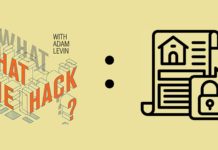

How would you cope if the tax refund you were counting on, and were counting the days until you received, just never showed up? How freaked out would you be if you found that it was sent to another address instead? How angry would you be if you received a notice a couple weeks after filing from the IRS, that not only didn’t include your refund but also demanded that you fork over additional taxes for supposedly failing to properly document income attributed to your Social Security number but from some employer you had never even heard of?
That is what people every day have to deal with when they are caught up in the nightmare of tax-related identity theft — a crime that is rapidly reaching epidemic proportions. It jeopardizes the financial future of millions of Americans, robs the Treasury of billions of dollars and can be just the first indication to victims that their lives are about to be turned upside down by thieves (and inside out by the government and newly-discovered creditors).
There were more instances of tax ID theft uncovered in the first six months of 2013 (1.6 million) than in all of 2012 (1.2 million), and IRS criminal investigations are up 66 percent since then. In that period of time, the IRS stopped 14.6 million suspicious returns from being processed and refused to distribute $50 billion in fraudulent refunds — and that’s just a drop in the bucket of what’s American taxpayers are really facing.
The Treasury Inspector General for Tax Administration found another 1.1 million suspected fraudulent returns that the IRS missed in 2011 alone — which resulted in $3.6 billion in apparent fraudulently-issued refunds. They also identified 174,000 Social Security numbers that were used on multiple tax returns in 2011, resulting in $183 million being paid out to identity thieves who filed fake returns before legitimate taxpayers got around to it. The most targeted Americans don’t even seem to know it — people whose income doesn’t appear to necessitate filing returns are most at risk, followed by students ages 16-22.
The Federal Trade Commission says that tax and wage-related fraud was the most common kind of identity theft about which consumers complained in 2012 — a full 43.4 percent of the identity theft complaints that the agency fielded. In short, tax identity theft is not an uncommon crime and, by all measures, it’s a growing criminal enterprise.
Ask any expert what the easiest way to avoid being a victim of this crime is, and you’ll get the same answer: File as early as possible. Once you file your return, it doesn’t matter what information an identity thief has on you — he or she can’t file in your name and collect your return.
But while there are already a few early birds out there looking for that sweet IRS refund worm the moment their W-2s arrive, many Americans wait until April to file their returns. However, this rising tide of tax identity theft is a good reason to reconsider — even in January — the wisdom of waiting until the last possible minute to file.
For those folks who don’t have the cash in hand for the tax man, filing early isn’t always an option. But that doesn’t mean you should cross your fingers, wait until April and hope for the best. If you can’t file fast, here are five things you should do to lower your risk of tax identity theft.
1. Mind Your Mail
Waiting on a W-2 from your employer, a 1099 from your savings account interest or a 1098-E to document your student loan interest? An identity thief might be, too – and that “Tax Documents Enclosed” notation on the envelope makes it easy for them to know which documents to pilfer. If your mailbox doesn’t lock, look into buying one that does, having your mail held at the post office until you receive your documents or, for next year, getting a P.O. box and changing your address with your employer.
2. Check on the Availability of Online Tax Documents
Many banks and even payroll processors offer electronic documents (though, obviously, you need to use good Internet security protocols, like strong passwords and secured WiFi, to make this method safe). If it’s available and you use strong security protocols, the documents you need might never make it into an obvious envelope at all.
3. E-File (and Free-File)
Bypass the hassle of figuring out what to staple where, and get a fast, free notification that your return was accepted (or early notice that there’s a problem). The feds will even let you e-file for free if your return lists an adjusted gross income (AGI) of $57,000 or less, and many states do the same.
4. Verify Your Tax Preparer
Even many in the government know that tax forms are complicated, the directions aren’t intuitive and folks get frustrated trying to figure it all out. That complexity and frustration fills tax preparers’ offices and coffers during tax season – but not all preparers are created equal. Before patronizing the local pop-up tax preparer or online outlet, use the IRS’s tips for checking out tax preparers and make sure the person you’re working with has a Preparer Tax Identification Number issued by the IRS.
5. Be Proactive
If you’ve already experienced some form of identity theft, even if it’s not tax ID theft, take some time to report it to the IRS via its Identity Theft Affadavit (Form 14039). The form will alert the IRS to be more careful when processing returns from your account and may prompt follow-up actions, including the issuance of an Identity Protection PIN to use when filing your taxes.
Taking these steps can make filing your taxes slightly more arduous — at least this year — but nothing is more time-consuming and painful than undergoing an IRS audit to prove that you’re you and the person who filed your tax return wasn’t.









